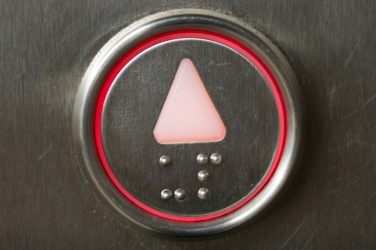Women make up half of Europe’s population, yet less than half of Europe’s parliamentarians / politicians / university professors / substitute a high-status profession of your choice are women. 6th Sense staff writer Maria Taskinen had a look at the makeup of parliaments across Europe to find out more.
In the beginning of last month, the Finnish newspaper Helsingin Sanomat published an article talking about the “everlasting one-third”. This number was meant to indicate the number of female interviewees in media across Europe. For every two men only one woman gets interviewed and the number of male names appearing is twice that of female names. The reason for this is fairly straightforward. Given that the world is still mostly ruled by men, the media therefore reflects the power structures of the world. Female politicians, experts and professionals are systematically underrepresented in the media because they are underrepresented in their fields. However, on a global scale, we often tend to perceive Europe as advanced and knowledgeable when it comes to women’s emancipation and equal representation. So, what is the situation of female representatives really like in European parliaments?
Women in politics in Eastern Europe
In 2020, an average of 33% of all parliamentarians in European national governments were women. In other words – around one-third. Stereotypically, the Nordic countries have been able to raise the average number, with female representation particularly low in Eastern European countries. However, during the past few months female representation in government offices has taken considerable leaps of improvement in many Baltic and Eastern European countries. Estonia celebrates its current status as the only country in the world being led by both an elected female Head of State and Head of Government while the Lithuanian cabinet has the largest proportion of women in the country’s history. Additionally, Moldova is currently being led by the first female president in the country while in Slovakia, Romania and Serbia female officials have already held executive and high-level state positions for a while. Is the picture of traditional gender roles that some in the media associate with Eastern Europe outdated?
Executives aside, it is true that Eastern European countries traditionally find themselves in the lower half of the rankings measuring seats held by women in national parliaments in Europe. Only in Serbia (39,4%) and North Macedonia (35,8%) the percentage of female members of parliament exceeds the EU average, while in Slovenia (21,2%) the number has been decreasing and is currently at its lowest since 2012. Nevertheless, it’s worth mentioning that the number of female politicians is still growing in many parts of the region. In Estonia (29,7%) and Lithuania (26,2%) the percentage of female parliamentarians has steadily increased in the past few years while the number of female cabinet members has broken national records in both countries. Also, in Ukraine (20,8%) and Romania (20,0%) the female percentage in parliament has almost doubled within the past five years while in Latvia the number jumped from 17% to 30% after the parliamentary elections in 2018 remaining on the same level today.
Gender parity utopia in Western Europe?
All this is promising and predicts an encouraging trajectory for the region, but to think that the issue of female underrepresentation is only an East European one is an illusion. From the Western perspective, it’s often easy to highlight one’s presumably progressive attitude and believe that something is being done to diminish the gap between men and women. But a liberal discourse about gender equality does not automatically equate to a higher number of women in parliament. The Netherlands (32,9%) barely reaches the EU average of female parliamentarians while Germany (31,4%) scores below average. Not much of a difference in comparison to Eastern counterparts.
As a Nordic female, I acknowledge my own somewhat privileged position and consider the EU average shockingly small. It feels like the notorious “one-third” seems to delimit female representation regardless of culture, openness or acceptance. As if it is some sort of bar to reach after which it’s okay not to push for true gender parity. We may have come far in women’s emancipation, but one look at Europe’s parliaments shows we have not come far enough. The fact that only nine European countries have parliaments that are more than 40% female quickly crumbles any images of a European gender equal utopia. As long as we imagine power to have the face of a man, equal representation will remain a goal and “one-third” the reality.
Cover photo by Joakim Honkasalo (Unsplash), Unsplash licence










